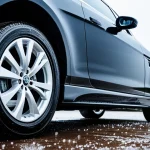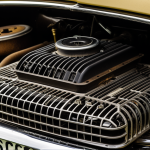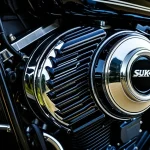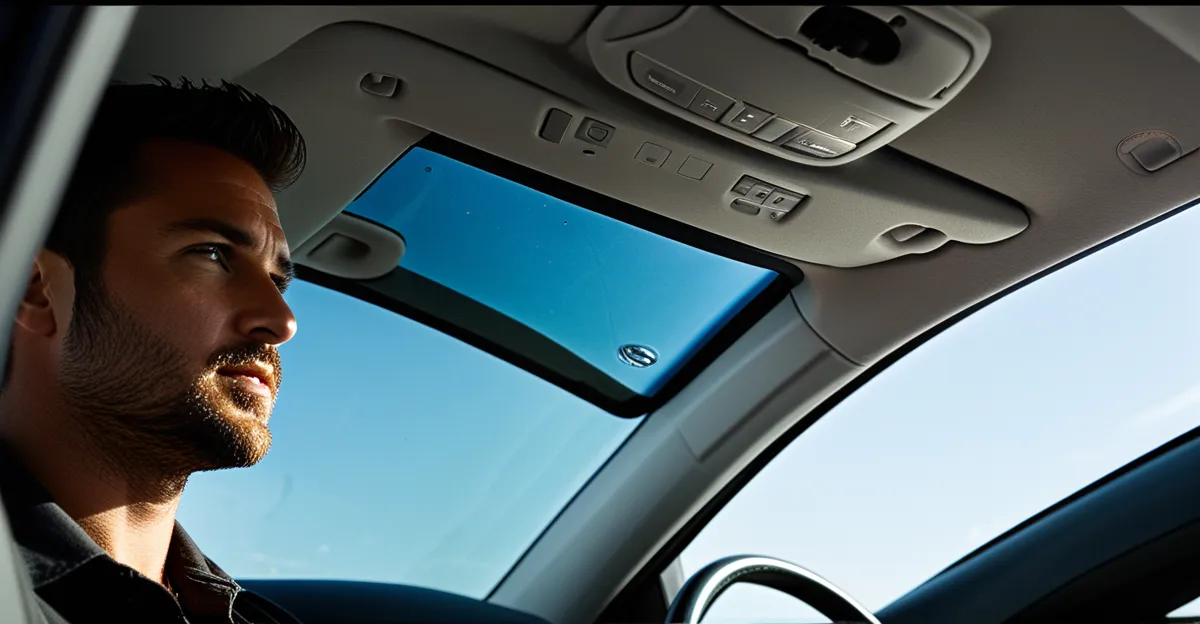Essential Sunroof Maintenance Techniques
Maintaining your sunroof involves more than an occasional wipe down. Effective sunroof maintenance starts with a thorough cleaning sunroof routine designed to preserve functionality and appearance. Begin by removing debris from the sunroof tracks and seals using a soft brush, then apply a mild cleaner suitable for glass and rubber components. Regular cleaning sunroof prevents dirt buildup that can cause operational issues.
How often should you perform routine sunroof care? Experts recommend inspecting your sunroof at least every three months. This frequency allows early detection of dirt, damage, or wear that could compromise its performance. Preventive maintenance is crucial: addressing small blockages or seal degradation early prevents leaks and mechanical failure.
A voir aussi : Essential Strategies for Safeguarding Your Gadgets During Car Moves
Preventive measures to avoid common sunroof issues include keeping drainage channels clear and lubricating seals lightly to maintain flexibility. Neglecting these steps increases the risk of water infiltration and noise problems. By integrating cleaning sunroof and routine sunroof care into your maintenance schedule, you ensure smooth operation and extend the lifespan of your sunroof’s components.
Lubrication and Component Care for Longevity
Proper sunroof lubrication is vital to keep your sunroof mechanisms operating smoothly and to extend sunroof lifespan. Begin by cleaning the tracks to remove debris, then apply a lubricant specifically designed for rubber seals and metal rails. Avoid grease or oil-based lubricants, as they attract dirt that can cause wear over time.
A lire aussi : The Ultimate Handbook for Securely Installing a Child Booster Seat in Your Classic British Car
Maintaining sunroof rails requires gentle, precise application. Use a silicone-based spray or a dry lubricant to ensure seals remain flexible and rails glide effortlessly. Apply lubricant sparingly along the entire track and on seals, then operate the sunroof a few times to distribute it evenly.
Regular inspection of components such as hinges, cables, and motors forms an essential part of sunroof maintenance. Look for signs of wear, corrosion, or stiffness in mechanisms. Early detection allows preventive maintenance to prevent breakdowns. Routine sunroof care including lubrication keeps all moving parts in peak condition, preventing costly repairs and ensuring quiet, reliable sunroof function.
Troubleshooting and Solving Common Sunroof Problems
When confronted with sunroof leaks, pinpointing the source is key. First, check drainage tubes for blockages—clogged drains often cause water to pool and leak into the cabin. Clearing these channels with compressed air or flexible wire restores proper flow. Next, inspect seals for cracks or wear; damaged seals must be replaced to eliminate leaks. Using a silicone-based seal protectant during routine sunroof care preserves seal elasticity and prevents further leaks.
For sunroof noise, such as rattling or wind sounds, identify loose components or misaligned mechanisms. Tightening screws and adjusting the sunroof frame can reduce noise dramatically. Lubricating sunroof rails also mitigates friction-related sounds. In some cases, worn seals or mounting clips cause vibrations—replacing these parts is necessary for quiet operation.
Sunroof troubleshooting extends to electrical issues causing operational failure. Check fuses and wiring connections carefully. If the sunroof motor stalls or responds sluggishly, test the motor and switches using a multimeter. Cleaning contacts and ensuring smooth lubrication help prevent motor strain. Timely troubleshooting and fixing sunroof issues safeguard comfort and prevent costly repairs.
Essential Sunroof Maintenance Techniques
Cleaning sunroof regularly is the cornerstone of effective sunroof maintenance. Start by gently removing leaves, dust, and grit from tracks and seals using a soft brush or compressed air. Avoid harsh detergents; instead, opt for a mild glass cleaner that won’t damage rubber seals or glass surfaces. This careful cleaning sunroof process prevents debris buildup, which can cause jamming or scratching over time.
How often should you perform routine sunroof care? Conduct inspections every three months to catch dirt accumulation, seal wear, or early signs of mechanical stress. This frequency supports preventive maintenance by addressing minor issues before they develop into costly repairs. Checking drain tubes during inspections ensures water flows freely, preventing leaks.
Besides cleaning, preventive maintenance involves lubricating seals lightly to maintain flexibility. Retain seal suppleness by applying a silicone-based protectant, which wards off cracking due to sun exposure or age. By integrating cleaning sunroof with these preventive steps, you not only maintain smooth operation but also extend the sunroof’s functional life, ensuring continued enjoyment without inconvenience or expense.
Essential Sunroof Maintenance Techniques
Sunroof maintenance hinges on consistent, routine sunroof care and a well-defined cleaning process. Begin by opening the sunroof to access and clean the tracks thoroughly. Use a soft brush or compressed air to remove leaves, dirt, and grit from both the tracks and seals carefully. Next, apply a mild, non-abrasive cleaner specifically designed for automotive glass and rubber components—avoid harsh chemicals that might degrade seals. Wipe surfaces gently with a microfiber cloth to preserve the sunroof’s finish and prevent scratches.
How often should you perform cleaning sunroof and inspections? Experts advise at least every three months. This schedule enables early detection of issues such as dirt buildup, seal degradation, or mechanical stress, crucial for effective preventive maintenance. Clear blocked drainage tubes during inspections to prevent water pooling and leaks.
Preventive measures include applying a silicone-based protectant to seals, maintaining flexibility and avoiding cracks from sun exposure. Ensuring debris-free tracks and lubricated seals reduces friction and wear, keeping the sunroof operating smoothly. Together, these steps form a comprehensive approach to sunroof maintenance that enhances longevity and reliability.
Essential Sunroof Maintenance Techniques
A thorough cleaning sunroof routine is foundational for effective sunroof maintenance. Begin by fully opening the sunroof to access the tracks and seals. Use a soft brush or compressed air to clear away leaves, dust, and debris that accumulate in these areas. This step prevents dirt from jamming the mechanism or damaging components. Follow by wiping the glass and rubber seals with a mild, non-abrasive cleaner specifically formulated for automotive use, avoiding harsh chemicals that can degrade seals over time.
How often should routine sunroof care be performed? Experts recommend inspections every three months. This frequency enables timely identification of problems like dirt buildup, seal wear, or early mechanical stress. During these checks, always clear any blocked drainage tubes to prevent leaks.
Key preventive maintenance measures include applying a silicone-based protectant to seals after cleaning. This maintains their flexibility, preventing cracking and ensuring proper water sealing. Additionally, keeping tracks debris-free and gently lubricated minimizes friction and wear, securing smooth sunroof operation and extending its service life.










